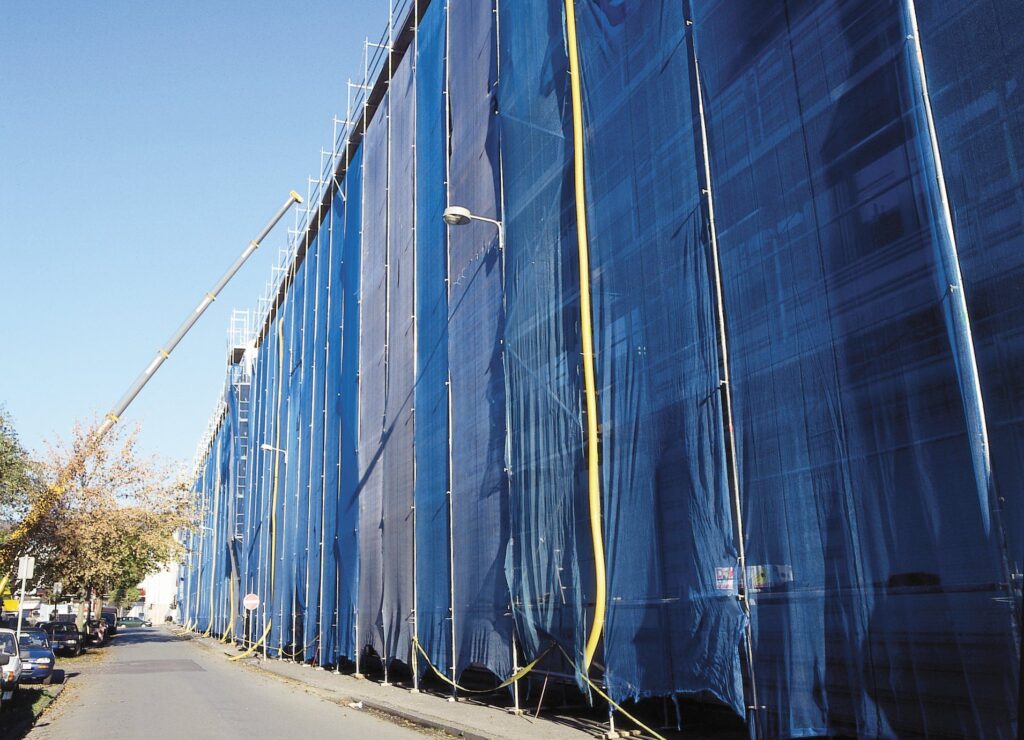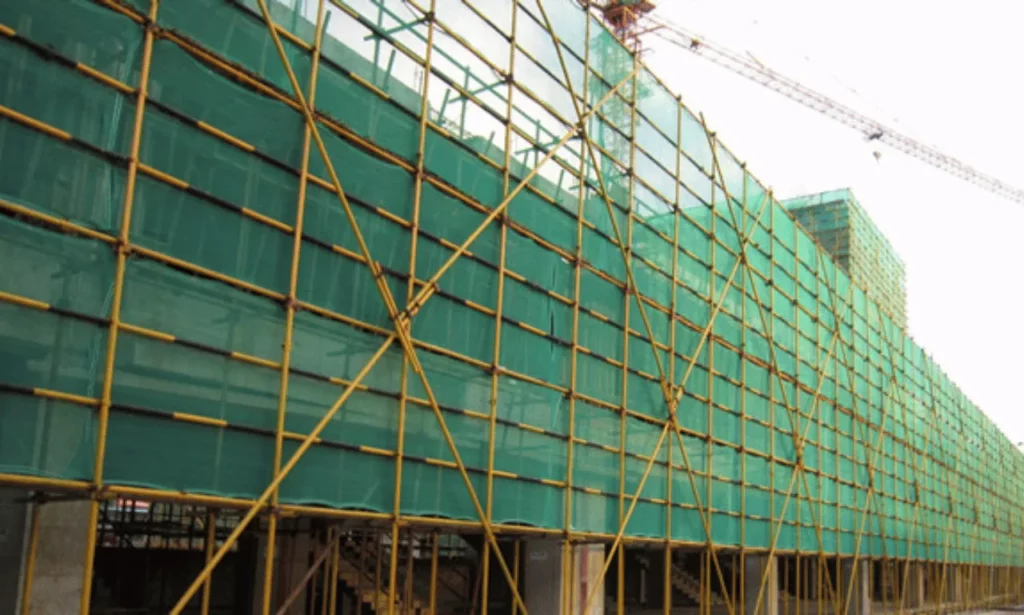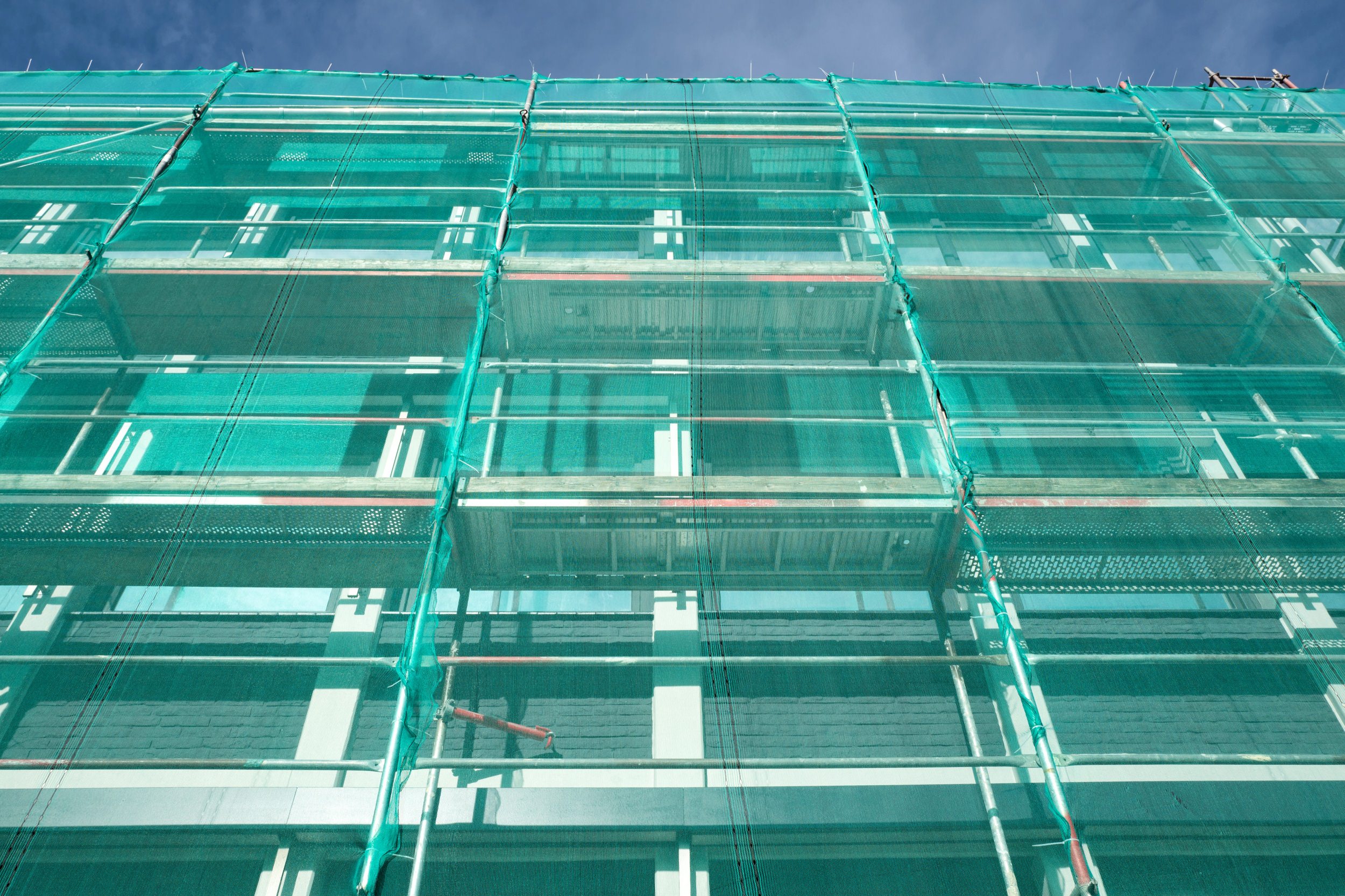Construction sites are often chaotic environments marked by significant dust and debris. Such particles can pose serious health risks and contribute to environmental degradation. The implementation of site mesh represents a practical solution for controlling dust and debris, ensuring a safer working environment while also protecting the surrounding ecosystem. This article delves into the various dimensions of site mesh and its critical role in construction.
Understanding the role of site mesh in construction
Site mesh plays an integral role in construction, acting as a physical barrier that helps manage dust and debris generated during the building process. By setting up this site mesh, construction companies can significantly mitigate the environmental impact of their projects, fostering a healthier atmosphere for workers and nearby residents.
Defining site mesh and its primary functions
Site mesh, often referred to as debris netting or scaffold sheeting, is a specially designed fabric used in construction environments. Its primary functions include preventing debris from falling, minimising the dispersal of dust particles, and providing a degree of safety to workers on-site. Made of durable materials, site mesh is typically lightweight yet robust enough to withstand environmental stressors.
In addition to its protective functions, site mesh can also serve as a barrier against wind and rain, further restricting the spread of dust and debris. This versatility makes it an essential component of any construction or demolition project, contributing significantly to overall site safety and environmental compliance. Moreover, the mesh can be customised in terms of colour and branding, allowing construction companies to maintain a professional appearance while also promoting their identity on-site. This dual functionality of site mesh not only enhances safety but also serves as a marketing tool, showcasing the company’s commitment to quality and environmental responsibility.

The relationship between site mesh and dust control
The relationship between site mesh and dust control is direct and significant. During heavy machinery operations or the alteration of structures, fine particles can easily become airborne, thereby impacting air quality. By strategically placing site mesh around the construction zone, companies can effectively trap these particles and prevent them from dispersing into the atmosphere.
This not only protects the workers on-site but also safeguards the health of the surrounding community. Effective dust control measures reduce the risk of respiratory issues among nearby residents, further underscoring the importance of implementing site mesh during construction activities. Additionally, the presence of site mesh can enhance visibility on the site, as it can be designed to allow for light penetration while still providing a barrier against dust. This feature helps maintain a safer working environment, as workers can better see their surroundings, reducing the likelihood of accidents. Furthermore, regular inspections and maintenance of site mesh ensure its integrity, allowing it to perform optimally throughout the duration of the project.
The environmental implications of dust and debris control
Adapting proper dust and debris control measures is essential, considering their broader environmental implications. The excessive dispersion of these pollutants can lead to long-term consequences, impacting air quality and local ecosystems. Learn more about pollutants on https://www.niehs.nih.gov/health/topics/agents/air-pollution
How dust and debris affect air quality
Dust and debris can contribute to a range of air quality issues, including the formation of particulate matter that poses health hazards to humans and animals alike. Prolonged exposure to airborne dust can aggravate respiratory conditions and may lead to chronic diseases over time. Furthermore, air pollutants can travel significant distances, consequently affecting areas far removed from the original construction site.
By using site mesh, construction companies can mitigate these effects, ensuring that dust remains contained. This proactive approach not only leads to immediate benefits for those on site but also contributes to cleaner, healthier air for the surrounding populace. It is worth noting that the implementation of such measures can also enhance the overall productivity of workers, as a cleaner environment reduces the likelihood of health-related absences and fosters a more focused workforce. Additionally, the use of water sprays and dust suppressants in conjunction with site mesh can further enhance air quality, creating a comprehensive strategy that addresses multiple sources of airborne pollutants.
The impact of uncontrolled debris on local ecosystems
Uncontrolled debris from construction sites can have devastating effects on local ecosystems. Whenever waste materials are left to disperse freely, the risk of contamination in soil and water sources increases. This can threaten flora and fauna, disrupt natural habitats, and even contribute to the decline of certain species.
Site mesh acts as a safeguard against this environmental threat, capturing debris and reducing the potential for ecological disturbances. By preventing debris from falling or being blown away, construction companies demonstrate their commitment to environmental responsibility. Furthermore, the presence of debris can attract pests and invasive species, which can further destabilise local ecosystems. By implementing effective debris control measures, companies not only protect the immediate environment but also contribute to the preservation of biodiversity. This is particularly crucial in areas where endangered species may reside, as even minor disruptions can have significant repercussions on their survival and the overall health of the ecosystem. Click here to find more about biodiversity.
The benefits of using site mesh for dust and debris control
The advantages of using site mesh extend beyond mere d
The benefits of using site mesh for dust and debris control
The advantages of using site mesh extend beyond mere dust and debris containment. Improved safety and organisation on construction sites are additional benefits that cannot be overlooked. With proper implementation, site mesh can transform the working environment on a construction site.

Enhancing worker safety with site mesh
Worker safety is paramount in any construction setting. The presence of dust and debris not only interferes with visibility but also increases the risk of slips, trips, and falls. By utilising site mesh, contractors can create a cleaner and more organised environment, significantly reducing the potential for accidents.
Moreover, site mesh can help ensure that tools and materials are secured, preventing them from falling and causing injury. When workers feel safe and protected, they are likely to be more productive and focused on the task at hand.
In addition, the use of site mesh can also mitigate the risks associated with airborne particles. Construction activities often generate fine dust that can be harmful when inhaled over prolonged periods. By effectively containing these particles, site mesh contributes to a healthier working atmosphere, ultimately safeguarding the long-term health of workers. Regular monitoring and maintenance of the mesh can further enhance its effectiveness, ensuring that it remains a reliable barrier against both dust and debris.
Maintaining site cleanliness and organisation
In addition to enhancing safety, site mesh contributes to better cleanliness and organisation on construction sites. By containing debris and dust, it makes it easier for crews to manage waste materials effectively. This leads to a more organised workspace, which is critical in meeting project deadlines and maintaining efficiency.
A tidy site can also foster a positive work culture, where employees feel pride in their environment. This is particularly important in larger projects where teams must collaborate closely, as a clutter-free space leads to improved communication and workflow.
Furthermore, the implementation of site mesh can also streamline the process of site inspections and audits. With a well-maintained mesh system in place, it becomes easier for safety officers and project managers to assess compliance with health and safety regulations. This not only aids in avoiding potential fines or penalties but also reinforces a culture of accountability among workers. The visual presence of site mesh serves as a constant reminder of the importance of maintaining a clean and safe working environment, encouraging everyone on-site to take responsibility for their surroundings.
Selecting the right site mesh for your project
Choosing the right type of site mesh is an important decision that can greatly influence its effectiveness in dust and debris control. With various options available, weighing specific factors is vital to making an informed decision.
Factors to consider when choosing a site mesh
When selecting site mesh, several factors should be taken into account. Firstly, consider the type of construction project at hand. Different projects may require varying levels of strength and durability based on environmental conditions and the nature of the work being conducted.
- Mesh Strength: Assess the material’s ability to withstand wind and weather.
- Opacity: Determine whether a solid or semi-transparent option is preferable.
- UV Resistance: Ensure the material can endure exposure to sunlight without degrading.
Understanding different types of site mesh
Site mesh comes in various types, each designed for specific applications and environmental conditions. Mesh types generally include knitted, woven, and non-woven materials, which vary in permeability and structural integrity.
- Knitted Mesh: Offers flexibility and strength, making it suitable for diverse projects.
- Woven Mesh: Known for its durability and ability to endure harsh conditions.
- Non-Woven Fabrics: Ideal for lighter applications but may not withstand heavy impacts.
Understanding these distinctions can guide construction teams in selecting the most appropriate site mesh for their specific project and environmental needs. Furthermore, it is essential to consider the installation process and the ease with which the mesh can be deployed. Some types of mesh may require specialised tools or additional labour, which can affect the overall project timeline and budget. Therefore, evaluating the installation requirements alongside the mesh characteristics can lead to a more streamlined and efficient construction process.
Additionally, the aesthetic aspect of site mesh should not be overlooked. In urban environments, where construction sites may be visible to the public, choosing a mesh that complements the surroundings can enhance the overall visual appeal. Some manufacturers offer custom colours and branding options, allowing construction companies to maintain a professional image while fulfilling their dust control obligations. This consideration of both functionality and aesthetics can significantly impact the perception of a construction project within the community.
Proper installation and maintenance of site mesh
Successful dust and debris control using site mesh also hinges on proper installation and maintenance. Installing the mesh correctly is crucial, as any misalignment or failure in securing it can compromise its overall effectiveness.
Step-by-step guide to installing site mesh
1. **Prepare the Site**: Clear the designated area of any debris or obstacles to facilitate smooth installation.
2. **Measure and Cut**: Measure the areas where the mesh will be installed and cut to the appropriate length.
3. **Secure the Edges**: Use appropriate fasteners to secure the top and bottom edges of the mesh to prevent sagging.
4. **Check for Gaps**: Ensure all gaps are addressed to prevent dust and debris from escaping.
5. **Final Inspection**: Conduct a thorough inspection to ensure the mesh is tightly secured and correctly positioned.
Tips for maintaining your site mesh for optimal performance
Maintaining site mesh is essential for ensuring its longevity and performance. Regular inspections should be conducted to identify any areas that may require repair or adjustment.
Assess the integrity of the mesh after severe weather conditions, as high winds or heavy rain may cause damage. Additionally, remove any debris that may accumulate on the surface, as this can contribute to wear over time.
Following these guidelines will ensure that site mesh remains an effective tool in controlling dust and debris throughout the duration of a construction project, ultimately leading to a cleaner and safer working environment.
